Slow Worm (Anguis fragilis)
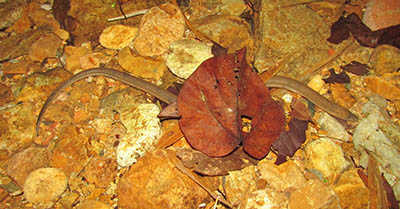
Image Copyright Paul Dunn
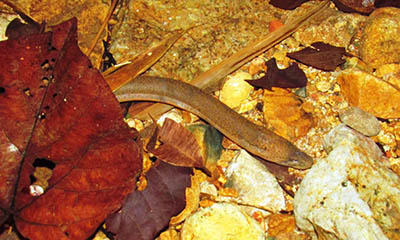
Image Copyright Paul Dunn
Last Observed: December 2015
Observed By: Paul Dunn
OK get ready. The slow worm isn’t actually a worm. And it isn’t a snake. It is actually a lizard without any legs that isn’t a snake. Yes they exist, this is one. Got it?
The Anguis fragilis, or slow worm, is a limbless lizard native to Eurasia. It is sometimes called a blindworm. Its German name, “Blindschleiche”, is derived from the Old High German plintslîcho meaning “blinding creeper”, perhaps because of its lustrous scales.
Slow worms are semifossorial (burrowing) lizards, spending much of the time hiding underneath objects. The skin of slow worms is smooth with scales that do not overlap one another. Like many other lizards, slow worms autotomize, meaning that they have the ability to shed their tails to escape predators. While the tail regrows, it does not reach its original length. They are common in gardens and can be encouraged to enter and help remove pest insects by placing black plastic or a piece of tin on the ground. On warm days, one or more slow worms will often be found underneath these heat collectors. One of the biggest causes of mortality in slow worms in suburban areas is the domestic cat, against which it has no defense.
Slow Worm Wikipedia
Black-Headed Bulbul (Pycnonotus atriceps)
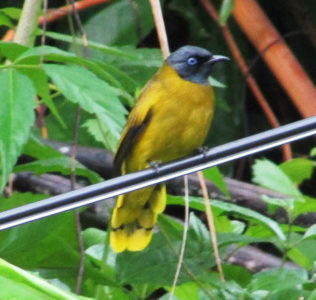
Image Copyright Paul Dunn
Last Observed: December 2016 – Koh Chang
Last Observed By: Paul Dunn
The black-headed bulbul (Pycnonotus atriceps) is a member of the bulbul family of passerine birds. It is found in forests in south-east Asia. It has a mainly olive-yellow plumage with a glossy bluish-black head. A grey morph where most of the olive-yellow is replaced by grey also exists. The distinctive taxon from the Andamans has most of the head olive, and is increasingly treated as a separate species, the Andaman bulbul, (P. fuscoflavescens). The black-headed bulbul resembles the black-crested bulbul, but has blue eyes (though not reliable in juveniles), a broad yellow tip to the tail, and never shows a crest (however, some subspecies of the black-crested are also essentially crestless, but they have red or yellow throats). The black-headed bulbul mainly feeds on small fruit and berries, but will also take insects. It commonly occurs in small flocks, comprising 6-8 individuals.
Don’t confuse the black-headed bulbul, which has a black head, with teh black-crested bulbul, which has a black head and a black crest, or ornithologists will scorn you.
Black-Headed Bulbul Wikipedia
Lesser False Vampire Bat (Megaderma spasma)
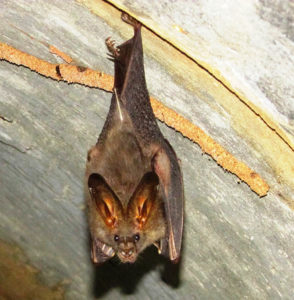
Image Copyright Paul Dunn
Observed: Koh Chang, December 2016
Observed By: Paul Dunn
The lesser false vampire bat (Megaderma spasma) is a bat found in South Asia and Southeast Asia from Sri Lanka and India in the west to Indonesia and the Philippines in the east. They live in caves and tree hollows. They are insectivorous.
The lesser false vampire bat has a wingspan of up to 30 centimetres (12 in) and have a head-and-body length of around 10 centimetres (3.9 in). Their forearms are normally around 7 centimetres (2.8 in).
The lesser false vampire bat has yellowish veins through the wing, and when the wings are spread with light behind, they are given a prominent yellow/orange tinge. Their body colour ranges from grey-brown to blue-brown. Lesser false vampire bats live in rock crevices, caves, foliage and hollow trees, depending on availability, as well as hanging and sleeping on trees in general.(bush-crickets or katydids) found in China, Japan, Nepal, India, Thailand, Singapore and Indonesia.
Lesser False Vampire Bat Wikipedia
Black-Capped Kingfisher (Halcyon pileata)
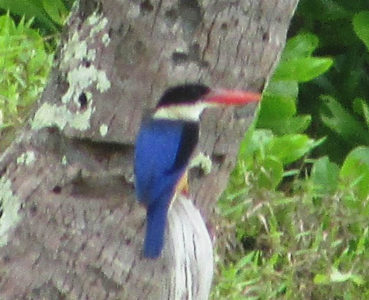
Image Copyright Paul Dunn
Last Observed: December 2016 – Koh Chang
Last Observed By: Paul Dunn
The black-capped kingfisher (Halcyon pileata) is a tree kingfisher which is widely distributed in tropical Asia from India east to China, Korea and Southeast Asia. This most northerly of the Halcyonidae is resident over much of its range, but northern populations are migratory and they wintering south of their range to Sri Lanka, Thailand, Borneo and Java. It is distinctive in having a black cap that contrasts with the whitish throat, purple blue wings and the coral red bill. The species is mainly found in coastal and mangrove habitats but can sometimes be found far inland.
It is a medium sized bird growing up to 28cm in length.
Black-Capped Kingfisher Wikipedia
Spotted House Gecko (Gecko monarchus)
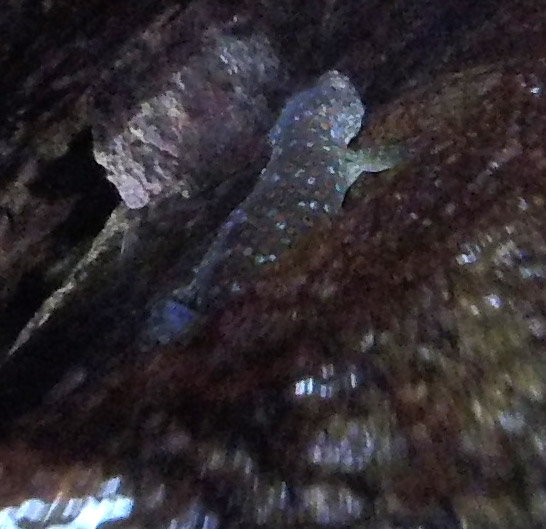
Image Copyright Paul Dunn
Last Observed: July 2016, Koh Chang
Observed By: Paul Dunn
The spotted house gecko (Gekko monarchus) is a species of gecko found in the Malay Peninsula (including southern Thailand and Singapore), some smaller Malaysian islands, Borneo (East Malaysia and Kalimantan), the Philippines, many Indonesian islands including Sumatra, Java, Sulawesi, and New Guinea (Irian Jaya and Papua New Guinea).
Characteristics
This reptile is flat-looking with a crocodile-like head. Most common eye color is gold, although green may appear also.
Their tails regenerate once dropped, as with most gecko species.
Males make quiet “tick tick tick” sounds when courting a female, both genders are capable of “popcorning” (a noise that resembles popcorn popping in the microwave) when uncomfortable or in danger.
Common House Gecko Wikipedia
Shikra (Accipter badius)
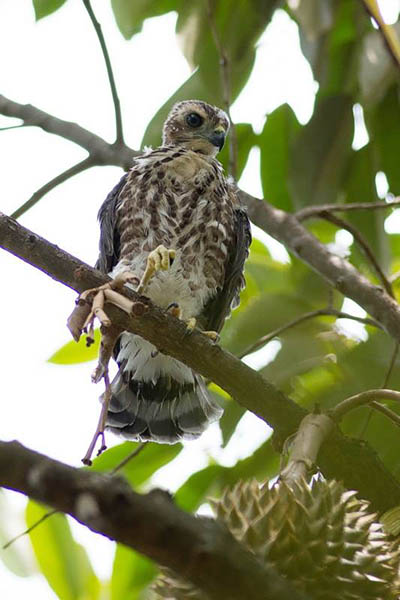
Image Copyright Suthanai Krupanitch
Last Observed: April 2016 – Koh Chang
Last Observed By: Suthanai Krupanich
The Shikra is a small bird of prey with a wide distribution across Asia and Africa. It is also called the little banded goshawk – but frankly that’s a rubbish name and Shikra is way more enigmatic and appropriate for this tough little raptor. It grows up to 30 cm in length.
The shikra was a popular bird with falconers in India and Pakistan because it could be trained very easily and was able to capture much larger birds such as partridges, crows and peafowl.
The word Shikari may also be used in English in the sense of “hunter”. In “The return of Sherlock Holmes” by Arthur Conan Doyle, Sherlock Holmes says: “I wonder that my very simple stratagem could deceive so old a shikari” (The Penguin complete Sherlock Holmes, 1981, pp. 492, 494).
Shikra Wikipedia
Zebra Dove (Geopelia striata)

Image Copyright Michael Erik Maria Finder
Last Observed: May 2016 – Koh Chang
Last Observed By: Suthanai Krupanich
The zebra dove, as you’d probably guess, has a striped pattern across its feathers. If it was spotted it would probably be a leopard dove I guess.
It is also known as the barred ground dove and is a bird of the dove family, Columbidae, which is native to Southeast Asia. They are small birds with a long tail and are predominantly brownish-grey in colour with black-and-white barring. They are known for their pleasant soft, staccato cooing calls.
They feed on seeds and small invertebrates.
Black-Crested Bulbul Wikipedia
White-Rumped Shama (Pycnonotus flaviventris)
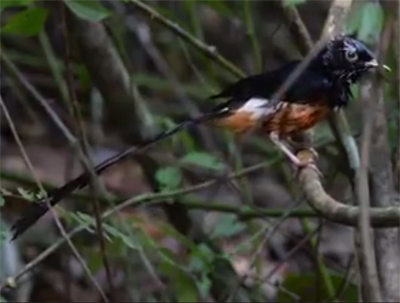
Image Copyright Suthanai Krupanitch
Last Observed: March 2016 – Koh Chang
Last Observed By: Suthanai Krupanich
The white-rumped shama is a small passerine bird of the family Muscicapidae. It is native to densely vegetated habitats in the Indian subcontinent and also Southeast Asia, its popularity as a cage-bird and songster has led to it being introduced elsewhere.
Who keeps birds in cages by the way? People who are jealous that they can’t fly?
The bird pictured is a male – the female is a greyish-brown colour and is smaller than the male.
The white-rumped shama is shy and mainly crepuscular (don’t worry, I had to look that up too – great word though!)
White-Rumped Shama Wikipedia
Scaly-Breasted Munia (Lonchura punctulata)

Image Copyright Michael Erik Maria Finder
Last Observed: May 2016 – Koh Chang
Last Observed By: Michael Erik Maria Finder
The scaly-breasted munia is a member of the finch family of birds that is native to tropical asia. It was formally described and named by the father of taxonomy Carl Linnaeus in 1758.
It is a small sparrow-sized bird that lives on mainly grass seeds, berries and insects. They forage in flocks and are more commonly found on tropical plains and grasslands than in the jungle environments of Koh Chang.
Scaly-Breasted Munia Wikipedia
Collared Owlet (Glaucidium brodiei)
Last Observed: June 2016 – Koh Chang
Last Observed By: Michael Erik Maria Finder

Image Copyright Michael Erik Maria Finder

Image Copyright Michael Erik Maria Finder
The collared owlet is Asia’s smallest owl growing to just 15cm in length and weighing only 60g. Big eyes though.
Collared Owlet Wikipedia













